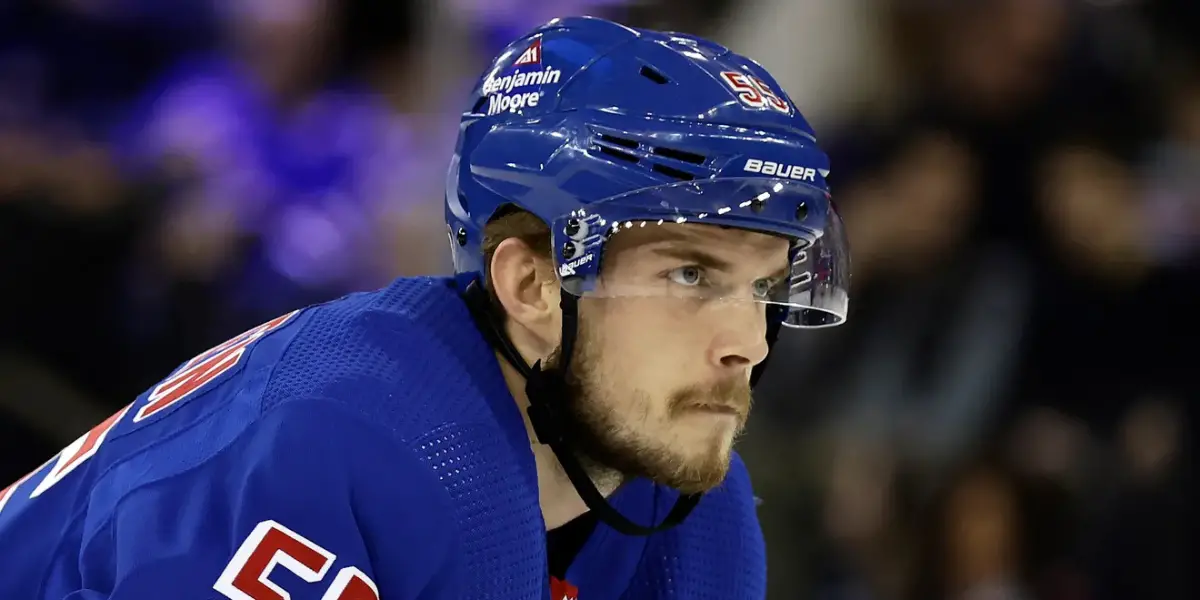
When you have one of the world’s greatest goaltenders playing behind you, it is easy to take him for granted.
This is something that the New York Rangers have been doing for the last decade or so. The team first did it with Henrik Lundqvist, who was inducted into the Hockey Hall of Fame last November, as he was forced to bail out the team time and time again throughout his whole career.
The club is now doing it with Igor Shesterkin and even backup goaltender Jonathan Quick to a degree. Thanks to Shesterkin’s strong play, the Blueshirts were able to get to the Eastern Conference Finals twice in the last three seasons, and his terrific play between the pipes even saw him win the Vezina Trophy as the league’s top goaltender in the 2021-22 season.
It appears that 11 games into the season, the Rangers seem to be fine with relying on their goaltenders, in particular Shesterkin, to do all the work. Yes, the Rangers are currently (as of Monday night, November 4) first in the Metropolitan Division, second in the Eastern Conference, and fourth in the league, but when it comes to their play without the puck, there is a lot to be desired.
For starters, the Rangers are giving up way too many shots on a nightly basis so far this season. As of this writing (Monday night, November 4), the Blueshirts are 29th in the league in shots allowed per game as they are giving up an average of about 33 shots (33.1) a game.
Allowing teams to fire away at your goaltender is something that is not sustainable, whether it is in the regular season or at the most important time of the year – the Stanley Cup playoffs. So far, both Shesterkin and Quick have had to deal with a lot of rubber this season.
Shesterkin, 28, is currently second in the league in saves behind Anaheim Ducks goaltender Lukas Dostal. In nine games, Shesterkin has stopped 279 of the 299 shots he has faced.
Quick, 38, has also faced his fair share of pucks while only playing in two games so far. He has stopped 61 of the 64 shots he has faced in wins over the Detroit Wings and Ducks.
Another problem that the Rangers are having is that none of the defensive pairings have clicked at a high level yet. Rangers head coach Peter Laviolette has been trying to find the right defensive combinations through his club’s first 11 games, and so far, the results have been shaky.
There are a lot of Rangers fans out there who like the pairing of Adam Fox and K’Andre Miller. While they can certainly put up a lot of points, it is not a great idea to have them together as both are offensive-minded and like to take chances.
When you put Jacob Trouba and Zac Jones together, a lot of mistakes get made. Jones is still trying to find his way in the NHL and it shows when he gives up the puck or gets caught out of position while Trouba sometimes goes out of his way to deliver a big hit and ends up taking himself out of the play and getting caught out of position.
While a pairing of Ryan Lindgren and Braden Schneider was not terrible, it was apparent that Lindgren’s play is a bit off this season. He seemed slower when it came to getting to loose pucks and it also seemed like he was uncomfortable out on the ice.
The good news is that based on what Mollie Walker, the Rangers beat writer for The New York Post, posted on X, the potential defensive pairings for their next game look a lot more palatable than what Rangers fans have seen so far this season. Here is what they looked like at their practice on Monday morning, November 4:
Lindgren-Fox
Miller-Trouba
Jones-Schneider
These pairings have played with each other before and have had success doing so. Yes, the Miller-Trouba pairing is a bit scary, considering how poorly they play in their end, but maybe they will find a way to bring out the best in each other.
One last problem that the team needs to fix when it comes to their defensive play is the number of quality scoring chances they give up in each game. The team gives up a lot of shots from the slot, leaves opponents open in prime scoring areas, and allows opposing players to walk right in on their goaltenders.
So far, at least, Shesterkin has been able to stop a majority of the tough chances he faces. With his quick reflexes, a great glove hand, and his positioning, he is always in a position to stop first, second, and even third chances if he has to.
The Rangers have been lucky that they have been able to get away with this kind of defensive play in the early going. Had they been facing tougher opponents, their record could look a lot different than it does right now.
As such, the Rangers fix their defensive problems because if they do not, it could end up hurting them in a big way come playoff time.

Back to Rants – Ranting Rangers: A New York Rangers Podcast
Discover more from Inside The Rink
Subscribe to get the latest posts sent to your email.



